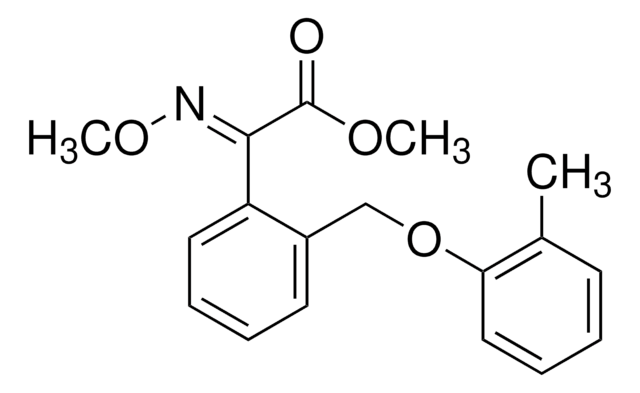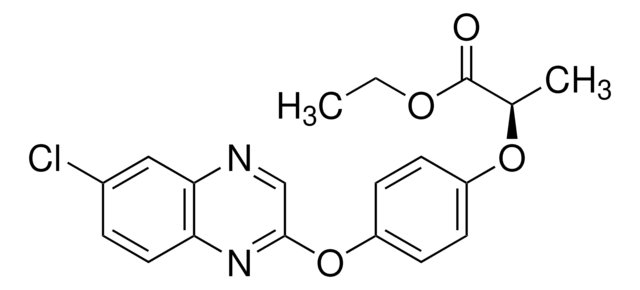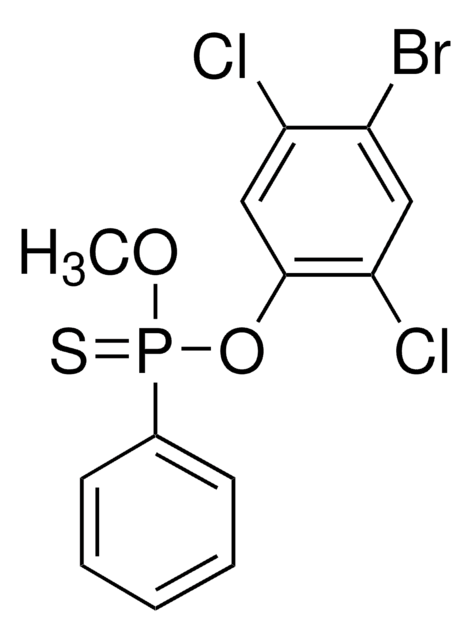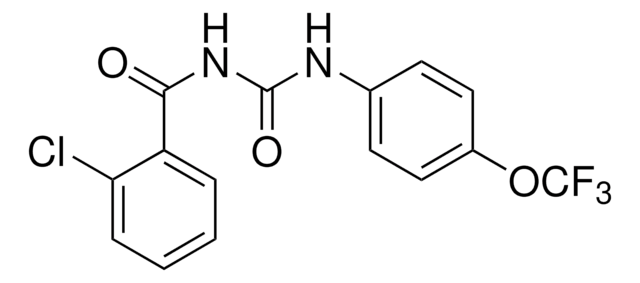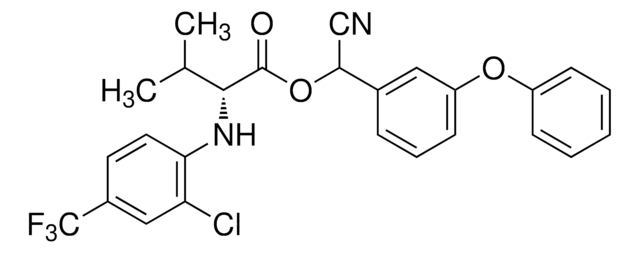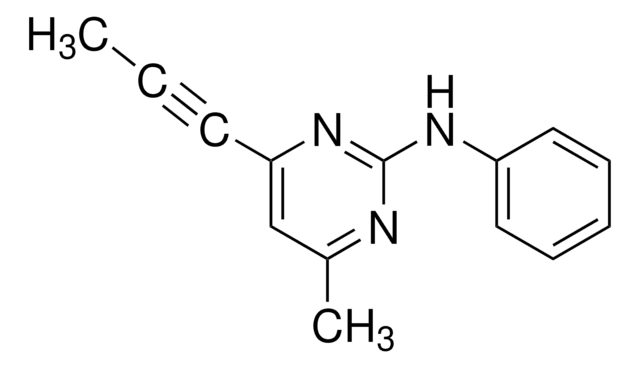Kluczowe dokumenty
31112
Lenacil
PESTANAL®, analytical standard
Synonim(y):
3-Cyclohexyl-6,7-dihydro-1H-cyclopentapyrimidine-2,4-(3H,5H)-dione
About This Item
Polecane produkty
klasa czystości
analytical standard
Poziom jakości
linia produktu
PESTANAL®
okres trwałości
limited shelf life, expiry date on the label
metody
HPLC: suitable
gas chromatography (GC): suitable
Zastosowanie
agriculture
environmental
Format
neat
ciąg SMILES
O=C1NC2=C(CCC2)C(=O)N1C3CCCCC3
InChI
1S/C13H18N2O2/c16-12-10-7-4-8-11(10)14-13(17)15(12)9-5-2-1-3-6-9/h9H,1-8H2,(H,14,17)
Klucz InChI
ZTMKADLOSYKWCA-UHFFFAOYSA-N
Szukasz podobnych produktów? Odwiedź Przewodnik dotyczący porównywania produktów
Opis ogólny
Zastosowanie
- W próbce wody przez zastosowanie chromatografii planarnej ze skanowaniem diodowym (TLC-DAD) i wysokosprawnej chromatografii z detekcją diodową (HPLC-DAD).
- W suchych matrycach, takich jak ziarno zbóż i niektóre pasze, za pomocą chromatografii gazowej / tandemowej spektrometrii mas z potrójnym kwadrupolem (GC-MS/MS).
Informacje prawne
Hasło ostrzegawcze
Warning
Zwroty wskazujące rodzaj zagrożenia
Zwroty wskazujące środki ostrożności
Klasyfikacja zagrożeń
Aquatic Acute 1 - Aquatic Chronic 1 - Carc. 2
Kod klasy składowania
11 - Combustible Solids
Klasa zagrożenia wodnego (WGK)
WGK 2
Temperatura zapłonu (°F)
Not applicable
Temperatura zapłonu (°C)
Not applicable
Środki ochrony indywidualnej
dust mask type N95 (US), Eyeshields, Gloves
Wybierz jedną z najnowszych wersji:
Certyfikaty analizy (CoA)
Nie widzisz odpowiedniej wersji?
Jeśli potrzebujesz konkretnej wersji, możesz wyszukać konkretny certyfikat według numeru partii lub serii.
Masz już ten produkt?
Dokumenty związane z niedawno zakupionymi produktami zostały zamieszczone w Bibliotece dokumentów.
Nasz zespół naukowców ma doświadczenie we wszystkich obszarach badań, w tym w naukach przyrodniczych, materiałoznawstwie, syntezie chemicznej, chromatografii, analityce i wielu innych dziedzinach.
Skontaktuj się z zespołem ds. pomocy technicznej
